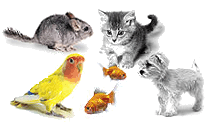posted 05-19-2003 08:05 AM


Bloat, also known as acute gastric dilation and/or torsion, is a condition that will kill an otherwise healthy dog in a matter of hours. The most common types of dogs affected by this deadly condition are the large, deep-chested breeds such German Shepherds, Collies, Dobermans, Rottweillers, Mastiffs, Wolfhounds and so many others.
The exact cause for bloating isn’t really known but the most accepted theory is that the dog has eaten an exceptionally large meal, drank lots of water and then proceeded to exercise strenuously within the next two to three hours.
It is believed that by exercising immediately after eating causes the stomach to expand with gas, fluid or expanding food causes extreme distention. If this occurs and is caught by a veterinarian in time, a large tube can be feed down the dog’s esophagus and on into the stomach. The audible hiss of escaping gas can be not only heard but also smelled.
If the distention isn’t caused by gas but by liquid and/or food, the same tube will be used to “pump” the stomach and carry the excess away while providing immediate relief to the dog. The owners will usually be told to leave the animal for observation to make sure the distention doesn’t reoccur. There are times when the tube will not pass and another aspect of bloat occurs.
When this happens, it is usually because the excess of food and liquid in the stomach combined with an animal who runs, jumps or exercises in some other manner causes the stomach itself to become flipped or twisted in a condition known medically as “gastric torsion.” When true gastric torsion cases occur, is mere minutes count toward the survival of the dog.
During gastric torsion, the stomach does a complete rotation or “flips” which then causes a constriction of the blood supply at each of the ends. Stomach tissue like any other tissue will become necrotic and die without the necessary blood supply.
The most noticeable symptoms are the grossly distended abdomen; extreme restlessness often with pacing, excessive salivation and drooling, attempts to vomit without results, whining and cries of pain. Unfortunately owners often don’t recognize the problem until it is too late. For the dog to be saved, the owner must notice the symptoms of gastric torsion or bloat early in the onset to have any chance of saving their pet. If the condition is not caught early enough, the dog will usually go into shock, become comatose and then die.
If the owner has been able to get the dog to the veterinarian early enough, and relief isn’t seen by passing the naso-gastric tube, surgery becomes the only option.
Again, this is a condition where minutes make the difference between life and what is an agonizing death. It must be remembered that even with surgery, the chances of survival are not that great.
During the author’s thirteen years of working in an emergency veterinary clinic, she saw only two dogs, a Doberman and one of her own collies survive the surgery. The condition of both of these dogs were noticed immediately and recognized as gastric torsion because both owners had had dogs die of the condition at some other time.
Without surgery, the mortality rate is 100% and the once the problem is diagnosed, the dog needs to go immediately into surgery or be put down to avoid needless suffering.
If surgery is the course of action decided on, the dog will be placed under a general anesthesia. The veterinarian will shave and prep the abdominal area from sternum to groin and make a large incision down the midline of the dog.
He will then proceed to pull the intestines and stomach out and lay it on the surgery table.
These organs and tissues will need to be kept wet so a technician will usually be standing by with large syringes filled with some type of sterile water that may even be mixed with antibiotics.
Once the abdomen is opened up and the necessary area is exposed, the doctor will then untwist the stomach. Once this is done, he will begin checking the stomach and intestine for necrotic areas. If any are found, he will usually recommend the dog be put down. If no dead tissue is found though, he will suture or “tack” the stomach to the abdominal wall with the material of his choice.
This tacking is done in the hopes of preventing the dog’s stomach from once again twisting. Once the stomach is tacked, the doctor will replace the intestines and proceed in closing the abdomen.
From this point, it will be a matter of wait and see as to whether the dog survives.
If he or she does, instruction will be given as to the special dietary and feeding needs of the dog. Usually, the doctor will recommend several small meals as opposed to one large meal during the day. He or she will also suggest placing the food at an elevated level, moistening any dry food so the dog will feel full quicker and limiting the availability of water after eating.
For those dogs lucky enough to survive their ordeal, they will normally go on to live long, healthy lives giving years of companionship to their owners as long as proper obedience is given to the doctor’s orders.


 Auspet - Message Boards
Auspet - Message Boards

 Articles - Dog Care & Health
Articles - Dog Care & Health

 Diseases - What is dog bloat condition: can it lead to death?
Diseases - What is dog bloat condition: can it lead to death?






